1, air conditioning domestic sales have obvious seasonality. According to China Yikang's 2008-2017 retrospective, April-July is probably the peak period of terminal sales, and retail sales accounted for 53-58% of the total, which is in line with the feature of air-conditioning cooling and heat-reduction. According to Industry Online's 2008-2017 retrospective, the peak period for domestic sales of the manufacturers is from March to June, and the shipments account for about 40% of the annual total, which is the leading terminal sales in terms of time, corresponding to the distribution of air-conditioning production capacity among domestic and foreign sales, and Gree and other companies represented the off-season distribution characteristics. The short-to-medium-term fluctuations in terminal demand are determined by the weather, real estate boom, and air-conditioning inventory cycle; the impact of the inventory cycle is reflected by the product price strategy.
2. Will the hot weather inevitably lead to sales of air-conditioning terminals? According to the China Meteorological Administration, during the past five years, the hot summers of 2013, 16 and 17 struck, and the summers of 14 and 15 suffered. In terms of volume size, 2013-2016, the annual sales volume of Zhong Yi Kang corresponded to 21%, 19%, 21% and 23% of the annual sales within the industry online, respectively, showing that the sample of Yikang in the period was relatively consistent. It is difficult to understand that the retail sales of China Yikang in 13-16 years hovered above and below 13.8 million units. Terminal demand did not significantly reflect the difference between the summer heat and the cool summer; this was in line with our previous tracking of Greemei's terminal sales. In the period of 2014-2016, the terminal sales in the domestic market were roughly 4,000-44 million units per year. In 2017, the air-conditioning retail business enjoyed a boom year. Terminal sales achieved a 20% or even higher growth, which was in line with the characteristics of strong summer heat and sales.
3. The determinants of terminal demand also come from real estate and inventory cycles. Why does the "high-temperature effect" of terminal retailing fail in 14-16 but fulfilling it in 2017? All factors affecting demand are changes in the company's business strategy in the real estate cycle and inventory cycle. In 2013, real estate sales boomed and in 2014-2016Q1, the domestic air-conditioning market experienced a complete cycle of inventory increase from rapid increase to struggle. During this period, air-conditioning price ASP fell for 16 months, and promotion boosted 14Q3-15Q4. The terminal retails, but may also partially overdue terminal demand in 2016. Terminal sales in 2017 are the result of favorable resonances in the post-property cycle and the summer heat. In addition, the increase in ownership per household is a long-term driving force for the expansion of the air-conditioning market. The high temperature of summer heat and the price reduction of products can be regarded as the catalyst that triggers the demand for air conditioning updates and the increase in ownership per household.
4. The inventory cycle caused the fluctuation of manufacturers' shipments to increase. Manufacturer shipments = terminal sales + channel inventory. Under the circumstances that the demand for terminals was relatively stable from 2014-2016, the intensification of the inventory cycle magnified the volatility of the manufacturers' shipments, and opened up a great deal of convergence. According to Industry Online, in 2014, manufacturers achieved 12.5% ​​growth through ultra-conventional press cargo, and the demand for terminals failed to synchronize, creating a backlog of inventory; 2015H2-2016H1 achieved inventory reduction through price cuts, and vendor shipments continued to decline from 2015-2016. Then in 2017, the demand for terminals improved, and the low base and low inventory of channels led the manufacturers to achieve 47% high growth in shipments.

Domestic air conditioner sales have obvious seasonality
Air-conditioning domestic sales have obvious seasonality. According to Zhong Yikang's 2008-2017 retrospective review, April-July was probably the peak period of terminal sales, and retail sales accounted for 53-58% of the total year-round, which was in line with the feature of air-conditioning cooling and heat-reduction as a function-oriented feature. According to Industry Online's 2008-2017 retrospective, the peak period of domestic sales for the manufacturers is from March to June, and the shipments account for about 40% of the annual total. Leading time is the terminal sales, which corresponds to the distribution of air-conditioning production capacity between domestic and foreign sales. The off-season distribution characteristics represented by Gree and other companies. The short-to-medium-term fluctuations in terminal demand are determined by the weather, real estate boom, and air-conditioning inventory cycles; the impact of the inventory cycle is reflected by the price strategy.
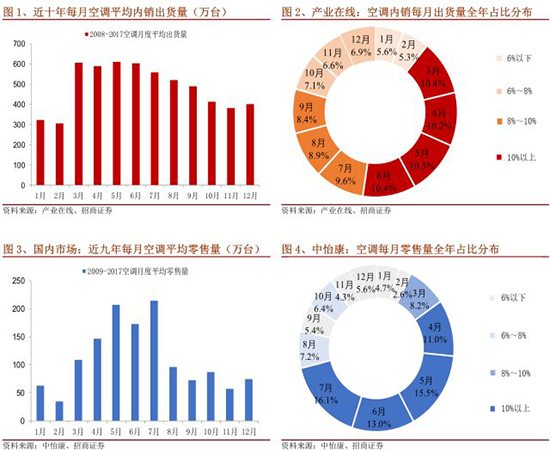
Online hot selling is concentrated in June and July, and the seasonal performance is even more pronounced. According to monthly sales of Taobao+Tmall's air-conditioners in the past year, online sales peaked in June, July, and November. Among them, November was mainly stimulated by the Double 11th Shopping Festival, regardless of seasonal factors.
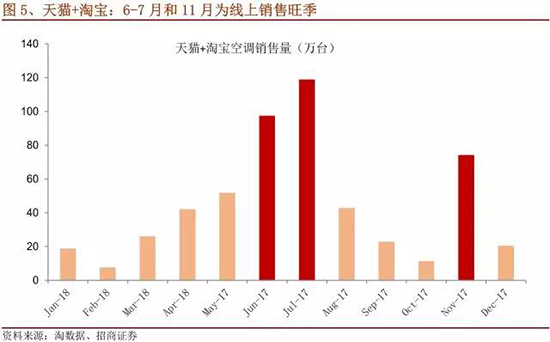
Does the hot weather inevitably bring air conditioning to the terminal?
The hot summers of 2013, 16 and 17 struck, and summers of 2014 and 15 suffered.
According to the "China Climate Bulletin" issued by the China Meteorological Administration, in the summer of 2013, the strongest high-temperature heat wave occurred in the south of China since 1951, and the high coverage above 40°C was more than three times normal, the largest since 1961, and Ningbo No. 1 high-speed charges. There was spontaneous combustion of the billboard near the station. In 2016, the summer temperature in China reached the highest level in history, which was 0.9°C higher than the same period of the normal year, and there were many high-temperature days, and the impact range was wide. The daily maximum temperature in many places broke the historical extreme value. In the summer of 2017, the national average temperature was 21.7°C, which was 0.8°C higher than the same period of the normal year, and it was the second highest since 1961 in 2013, second only to 2016 (21.8°C).
In the summer of 2014, the national average temperature was 21.1°C, which was only 0.2°C higher than normal in the same period of the normal year. In the middle and lower reaches of the Yangtze River, there was an unusually cool summer with a low temperature of 0.6°C. Among them, continuous low temperature and rainy weather appeared in August, and the temperature was low in most areas. From 2 to 3°C, the average temperatures in Anhui and Jiangsu were the lowest since 1961. In the summer of 2015, the national average temperature was 21.2°C, which was only 0.3°C higher than the normal year-on-year period. Among them, temperatures in most parts of the Middle East were close to normal or low in the same year, and 0.5 to 1°C lower in the middle and lower reaches of the Yangtze River and in Chongqing and northern Guizhou. The local area in Anhui is low by 1~2°C, and cool summer occurs in the middle and lower reaches of the Yangtze River.
In terms of volume size, 2013-2016, the annual sales volume of Zhong Yi Kang corresponded to 21%, 19%, 21% and 23% of the annual sales within the industry online, respectively, showing that the sample of Yikang in the period was relatively consistent. It is difficult to understand that the retail sales of China Yikang in 13-16 years hovered above and below 13.8 million units. Terminal demand did not significantly reflect the difference between the summer heat and the cool summer; this was in line with our previous tracking of Greemei's terminal sales. In the period of 2014-2016, the terminal sales in the domestic market were roughly 4,000-44 million units per year. In 2017, it was the year of booming air-conditioning retail sales. Terminal sales achieved a 20% or even higher growth, and it seemed to be in line with the characteristics of strong summer heat and sales.
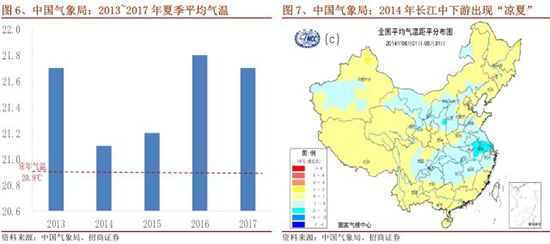
It seems to be contrary to common sense judgments. Is it not obvious that the "smooth heat" has no obvious effect on the sales of air conditioners? In the 13/16/17 year, the sales volume in the Chinese Iegro season (April to July) increased by 12.4%/6.9%/5.9% year-on-year, which is not the same as the growth rate; and in 2013, although the year-on-year growth of air-conditioning retail sales was relatively high, it was still less than The overall retail sales growth of air-conditioners during the year (15.9%), that is, the increase in sales of air conditioners in 2013 was not mainly driven by the peak season. From another perspective, the proportion of annual sales during peak season sales can also measure the importance of peak season sales, but in the three “Summer†years of 13/16/17, the annual sales during the peak season are lower than the historical average. Level (average share of peak season 2009~2017).
In addition, the "cool summer" suppression of air-conditioning terminal sales is not absolute. In the summer of 2014, the weather was cool, and the retail sales in the peak season increased by 5% year-on-year, still higher than the annual growth rate of 1.7%, and the sales for the peak season was also higher than the historical average. The “cool summer†effect was more apparent in 2015. The retail sales in the peak season fell by 6.6% year-on-year, and the annual retail sales fell by 0.9% year-on-year.
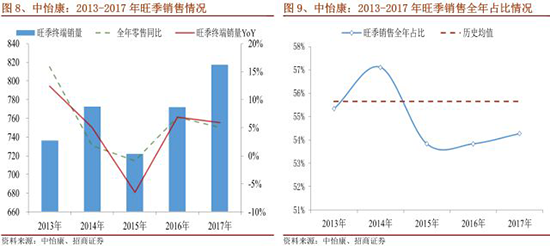
Terminal demand is also affected by real estate and product prices
As mentioned earlier, why did the “high-temperature effect†of retail terminals fail in 2016 but was completed in 2017? It can be seen that in addition to weather factors, the determinants of terminal demand also come from property and inventory cycles. The impact of the inventory cycle is reflected by the price strategy in the sales process.
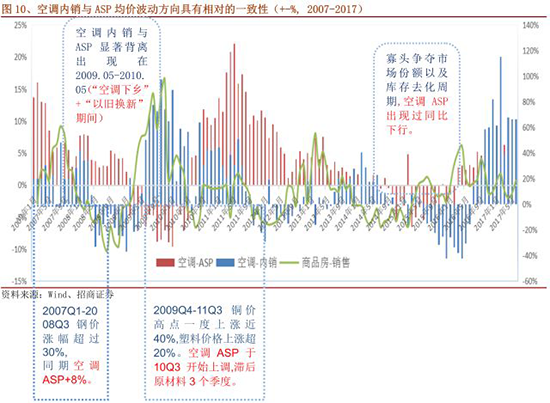
In 2013, real estate sales boomed, and in the period of 2014-2016Q1, the domestic air-conditioning market experienced a complete cycle of rapid increase in inventory and struggles. During this period, the air-conditioning price ASP fell for 16 months. The promotion promoted 2014Q3-2015Q4. The terminal retails, but may also partially overdue terminal demand in 2016. Terminal sales in 2017 are the result of favorable resonances in the post-property cycle and the summer heat.
The expansion of the domestic air-conditioning market, as well as the long-term driving force of increased ownership per household. High-temperature weather and product price reductions can be seen as catalysts for triggering air-conditioning update requests and increased ownership per household.
Inventory cycle leads to increased volatility in shipments from manufacturers
The inventory cycle is the reason why the manufacturer's shipping fluctuations are amplified. Manufacturer shipments = terminal sales + channel inventory. Under the circumstances that the demand for terminals was relatively stable from 2014-2016, the intensification of the inventory cycle magnified the volatility of the manufacturers' shipments, and opened up a great deal of convergence. In 2017, the growth rate of shipments of manufacturers (48% of online industry) was also significantly faster than that of terminal sales (estimated 20%. China Yikang Data was not quoted here: because of the volume scale of China Yikang’s corresponding industry online in 2017 The decline of 7pct to 17% is expected to be related to the rapid development of air-conditioning electricity suppliers. According to Industry Online, in 2014, manufacturers achieved 12.5% ​​growth through ultra-stamped goods, and the demand for terminals failed to synchronize, creating a backlog of inventory; 2015H2-2016H1 achieved inventory reduction through price cuts, and vendor shipments declined consecutively from 2015-2016. . Then in 2017, the demand for terminals was soaring. Under the background of low base and low inventory of channels, the company’s shipments were driven to achieve 47% high growth.
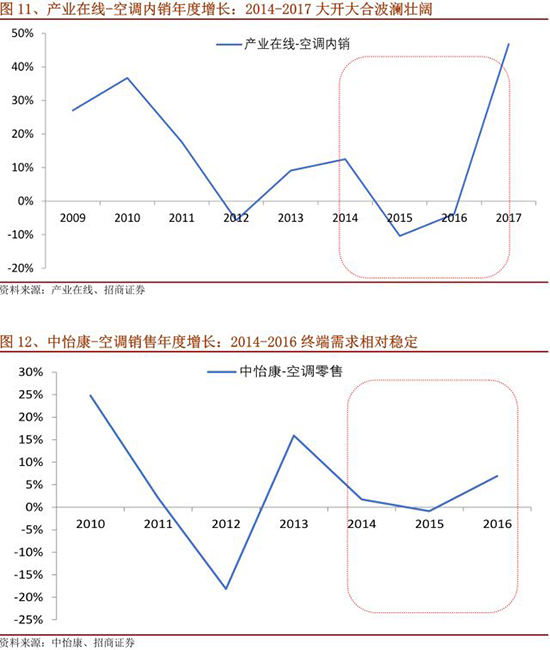
Guangzhou Yunge Tianhong Electronic Technology Co., Ltd , https://www.e-cigarettesfactory.com